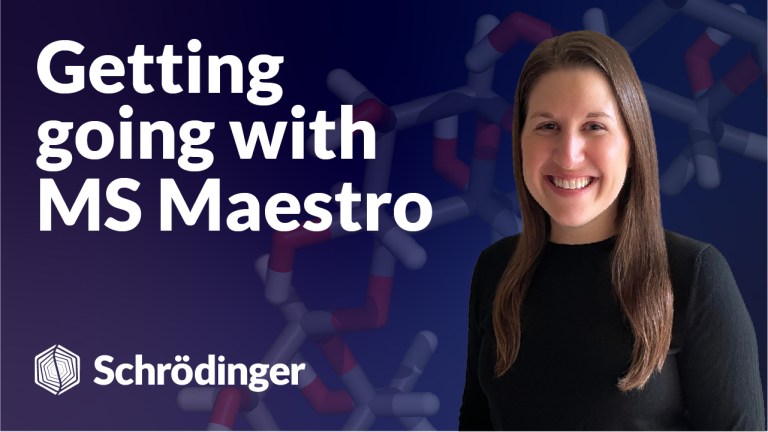Free learning resources
Quickly learn how to integrate Schrödinger technology into your research. From overviews to deep dives, you can find information about applications, workflows, and analysis here.
Quickly learn how to integrate Schrödinger technology into your research. From overviews to deep dives, you can find information about applications, workflows, and analysis here.
 Video
Materials Science
Video
Materials Science
A free video series introducing the basics of using Materials Science Maestro.
An introduction to Materials Science Maestro, covering basic navigation, an intro to building models and several of the key functionalities of the graphical user interface.
Comprehensive reference documentation covering materials science panels and workflows.
Self-guided step-by-step introductions to various workflows with example files for getting comfortable with Schrödinger tools.
Short video overviews of specific introductory and scientific topics, including summaries of new release features.
A one-page PDF that visually describes the panel or workflow.
Learn to use the Optoelectronic Device Designer panel to design an optoelectronics device structure.
Learn to calculate the thin plane shear viscosity and friction coefficient.
Comprehensive reference documentation covering materials science panels and workflows.
Learn to compute the singlet-triplet intersystem crossing rate for a system of organic optoelectronics.
Tutorial that explains how to understand the formation and decomposition of Nitrosamines.
Tutorial to show how to use adsorption tools to model atomic layer deposition (ALD) processes.
Tutorial that shows how to create a set of diazatetrazene isomers by using the features of the Elemental Enumeration panel.
Information on supported platforms and the hardware required to run Schrödinger software.
Learn to compute the singlet excitation energy transfer on an organic molecule and analyze the results.
Generate new structures for which a chosen set of optoelectronic properties is optimized by mutating the structures with a genetic algorithm.
Level up your skill set with hands-on, online molecular modeling courses. These self-paced courses cover a range of scientific topics and include access to Schrödinger software and support.
Connect your students to industry-leading molecular modeling software through a web-based platform. Incorporate molecular modeling in the classroom.